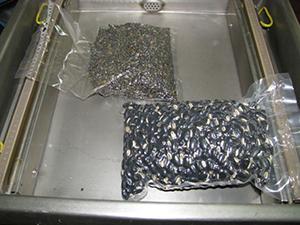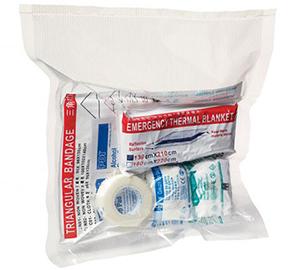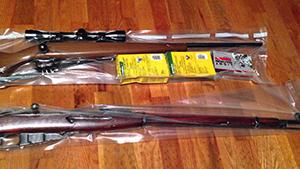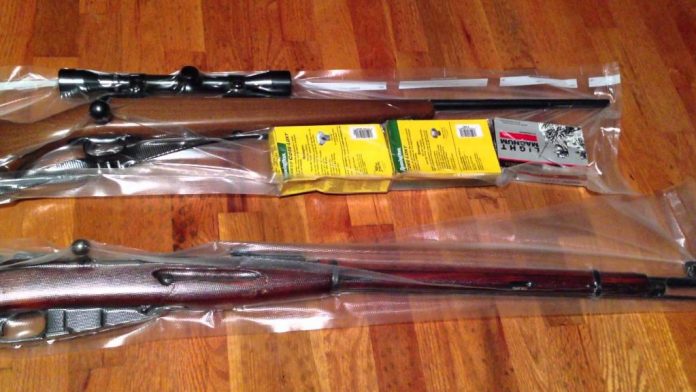A vacuum sealer is a great tool. If you make your own jerky, dehydrate fruit or buy bulk goods, then split them into portion sizes and store them in safe, sealed packaging is a real advantage.
What’s a good vacuum sealer, though? Have you ever found yourself holding a vacuum bag and looking speculative? If so, that’s fine; a vacuum sealer, combined with some creativity, can be a powerful prepping tool. It can do more than just shop food parts.
Here are a few less conventional kitchen appliance uses:
Store seeds


Why spend money on expensive seed vault when you can collect and vacuum-pack your own seeds from the garden? Just write the seed information on a card – what they are, the date they were harvested, and some planting tips – and seal the seeds in the container.
If you’re packing small seeds, the vacuum might suck them out of the bag. Put the seeds in a coffee filter (make sure it’s unbleached paper), then seal it in the bag.
Weatherproof Medical Supplies


It’s vital to keep medical supplies as clean as possible, but many of them come in flimsy paper packaging that won’t stand up to any abuse. Bandages are a common victim of this, which is unfortunate, as bandages are one of the most useful and versatile items in any first aid kit.
Seal bandages in a waterproof pack. You can also break and seal bulk packages of items like gauze down into single-use sizes. Make packs of all the items you need to treat likely injuries, for example, major wound packs with sutures, gauze and bandages. That way, if you have multiple casualties, you can just handle whoever treats the pack they need.
Related: 10 Medical Supplies to Stock Up on Before it’s too Late
Protect Important Documents
Collect any paperwork you don’t use regularly, but you’d take it with you in an emergency. Sort the pile into groups, e.g.:
- Insurance documents
- Share and bond certificates
- Treasured photographs
- Birth and marriage certificates
- Educational diplomas
- Paper maps
Seal each stack in a separate bag. This will protect them from humidity, insects, and wear and tear. If you need to grab them and bug them out, there’s no last-minute rush to pack them in something that can stand up to the weather. Some documents are worth sealing separately, so you can read them without opening a bag and sorting a stack.
Safely Stash Valuables
Many preppers put their faith in precious metals as currency post-collapse. If a crisis is enough that modern fiat currencies collapse – or governments are no longer around to issue them – precious metals could become the money of choice.
The problem is, governments might think so too, and we don’t even have to guess their reaction — we know what they’re going to because they’ve done it before. In 1933, Executive Order 6102 made “hoard” gold illegal, authorizing the U.S. government to confiscate most of it. Owners were paid in paper money at unfairly low government rates. When the currency moves back to gold in the future, you can bet the government needs as much in its hands as possible
Secure your gold and silver in secret caches. Seal bullion or coins in sacks, bury around your house. The bags keep it clean, stopping silver from tarnishing.
Prepare to Survive Gun Confiscation


Confiscating all U.S. weapons is unlikely, but what if the government is dumb enough to try? Make sure you’re not gunless by burying a gun (or two) and ammunition boxes. Put it in a bag with a cartridge or magazine worth ammunition (do not store filled magazines) and a silica desiccant box, then seal it. Break extra ammo between a few bags; don’t place all eggs in one basket. If the gun is a semi auto, add a magazine to each bag. A silica packet must also cover weapons.
Related: 5 Ammo Stockpiling Mistakes You Are Probably Making Right Now
Organize Your Bugout Bag
When did you last check your bugout bag? You probably don’t want to mess with it, because everything’s pretty tight. Or (worse) you sometimes “borrow” things from it when you need them around the house, and they aren’t always replaced.
Much stuff in your bugout bag can be sealed, which has some advantages. If you have to grab the bag in bad weather, its contents will be waterproof. You’re less likely to borrow stuff if that means opening the bad. You will also save space; vacuum-packing your spare socks, underwear and warm clothing will make it much more compact.
Make Custom Survival Rations
Mix in ramen noodles, dehydrated vegetables, bouillon powder and seasonings in a bag, add plastic spoon, seal. To cook the meal, open the bag, remove the spoon and add boiling water; let it stand for five minutes and you’ll have a delicious meal. Dehydrated meals like this are lighter than MREs and can be tailored to your own tastes. They’re even better for you than MREs.
You can also save on snacks. Nuts, trail mix, raisins, rice crackers and other snacks are all much cheaper if you buy them in large packs, but large packs aren’t as outdoor rations. Divide them into your desired portion size and seal them. The great thing you can do is make up your own mixes, too. Raisins, dried cranberries, peanuts, chocolate chips.
You can do many other things with a vacuum sealer. Make 2:1 ice packs with water and rubbing alcohol. Save potato chips (and your waistline) by resealing half-eaten bags instead of removing them. Seal and dry herbs in the freezer. Basically, anything that lasts longer if air and humidity are kept away can be vacuum-packed.
If you have your own great vacuum-packing ideas, we’d love to hear about them!





















